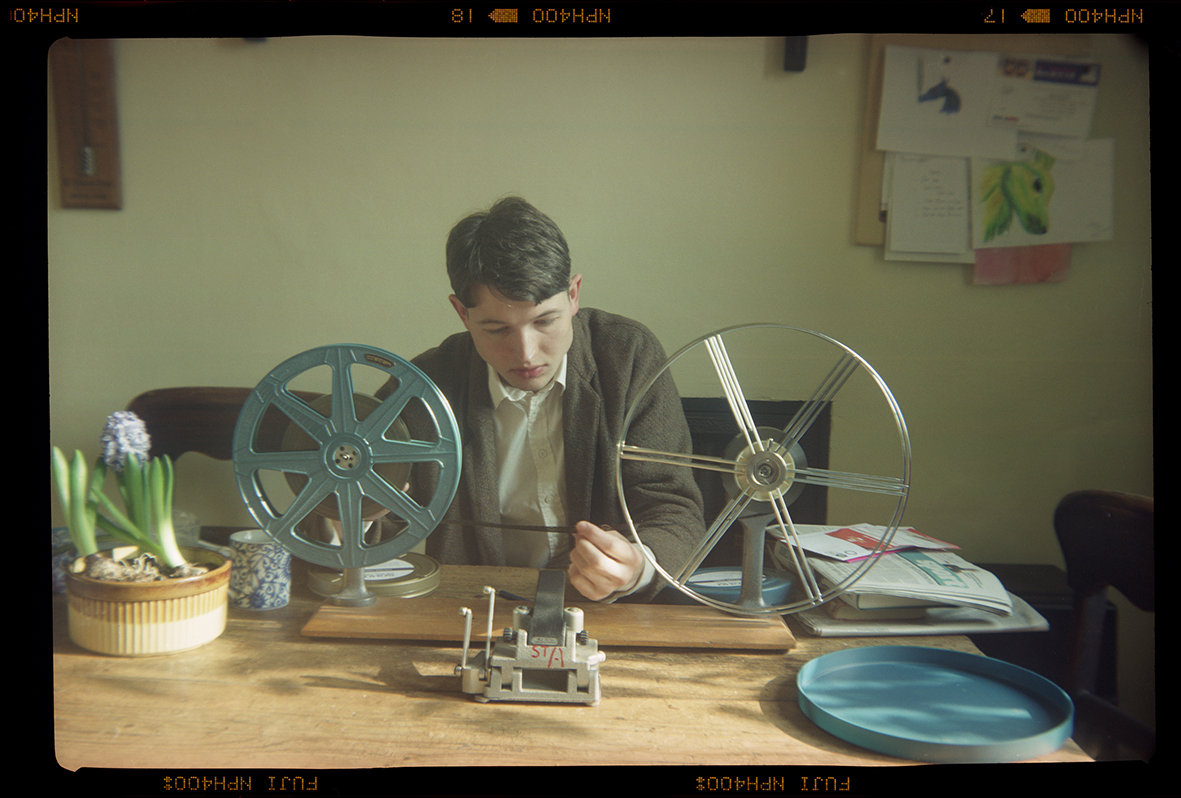
Luke Fowler
︎ https://www.luke-fowler.com/ ︎︎︎
Luke Fowler (born 1978) is an artist, 16mm filmmaker and musician based in Glasgow. He studied printmaking at Duncan of Jordanstone College of Art and Design in Dundee. He creates cinematic collages that have often been linked to the British Free Cinema movement of the 1950s. His para-documentary films have explored counter cultural figures including Scottish psychiatrist R. D. Laing, English composer Cornelius Cardew and Marxist-Historian E. P. Thompson. As well as portraits of musicians and composers he has also made films and installations that deal with the nature of sound itself. Luke Fowler has worked with a number of collaborators including Eric La Casa, George Clark and Peter Hutton, Mark Fell, Lee Patterson, Toshiya Tsunoda, and Richard Youngs. He collaborated with guitarist Keith Rowe and film maker and curator Peter Todd on the live sound and film work The Room.
Luke was a guest at SOLA festival 2018, when we had a retrospective of his works. This time we will only screen Luke’s portrait of Margaret Tait.


Luke Fowler: Being in a Place – A Portrait of Margaret Tait (2022, 61 min, UK, DCP)
In the spirit of the late filmmaker and poet, Margaret Tait (1918-1999), Being in a Place is as much a portrait of Tait’s beloved Orkney, the place she lived and filmed for most of her life, as it is about her. Tait borrowed the term ‘Stalking the Image’ from the poet Federico Garcia Lorca, to describe her own approach to filmmaking, a method which involved considering everything within the frame with equal intensity. Her approach to portraiture also gives equal attention to the person as well as the place they are situated within. Writing about her film Land Makar (1981), a portrait of Mary Graham Sinclair, a local crofter and neighbour of Tait’s, she describes the film as a kind of expanded portrait, ‘worked out in differently coloured sequences, like a number of linked canvases’, depicting Sinclair in relation to her croft of West Aith, the surrounding fields and the animals on her land who ‘lived there in equality’. Tait was reluctant to settle on whether or not it was a portrait of Sinclair or of the Orcadian landscape. What Tait argues is that the two are equally important and inextricably linked and therefore must be give equal attention.
Being in a Place looks at Tait through a variety of lenses, considering her in relation to where she lived, as well in relation to her extensive archive. The film engages with Tait’s paper archives, including letters, diaries, production notes, as well as her sound archive, both of which are now held at the Orkney Library and Archive. The film also draws upon newly recovered and restored film material, including rushes, tests, offcuts, and alternative versions of finished films that were discovered in the garden shed at Cruan, the house Tait shared with her husband Alex Pirie. Although Tait’s main film archive is held by National Library of Scotland’s Moving Image Archive, this more recent material was unable to be acquisitioned by them because of a policy to only collect Tait’s completed films. Nevertheless, the ‘fugitive archive’ continued to be preserved under the custodianship of Tait scholar, Prof. Sarah Neely, the film’s co-producer. It is hoped that their inclusion in Being in a Place will draw attention to their significance.
During the film’s production, the family currently living at Tait’s former home made a further discovery – a literal treasure chest of rushes relating to a 1983 television profile directed by Margaret Williams for Channel 4. Tait had three television profiles made about her during her lifetime, none of which she was happy with. While the film incorporates some of the material from the profile featuring Tait in interview with fellow artist and curator, Tamara Krikorian, it rejects the idea of offering a definitive portrait, and instead adopts the more peripheral gaze favoured by Tait, considering the material within a wider context.
Tait claimed that one of the only reasons she agreed to the Channel 4 profile, was because she thought it would make them consider some of the scripts she was working on. Unfortunately, nothing ever materialised and several unfinished scripts remained. The discovery of one of Tait’s unfinished scripts in her archive, was a further catalyst for Being in a Place. The proposal for a feature-length film, with the working title Heartlandscape: Visions of Ephemerality and Permanence, was originally penned for Channel 4 in 1983, but was never completed. The ‘Heartlandscape of Orkney’ is the name she coined for the landscape she traversed on her daily drive to work, from her home in Aith to her studio, a former Kirk in Rendall. The journey encompasses views over Rousay and other Orkney isles and beyond it to the Atlantic Ocean and Hoy. Tait was most fascinated by the variety of this terrain ranging from ‘peaty wilderness areas to prehistoric dwellings and signs of modernity’ and of course the people who live and work on the land. In many ways, this ‘Heartlandscape’ could be read as a microcosm of Mainland Orkney.
Being in a Place retraces Tait’s journey, both literally and metaphorically, bringing the past and present in dialogue, considering Tait within the wider landscape of Orkney, and providing a sonic and visual exploration of the place that meant so much to her.
All artists ︎︎︎